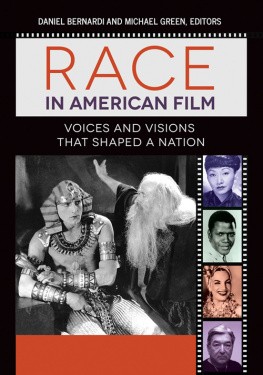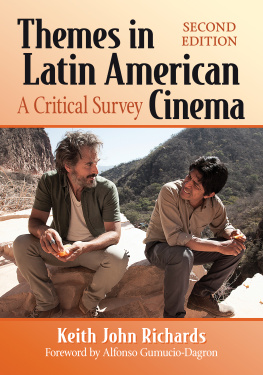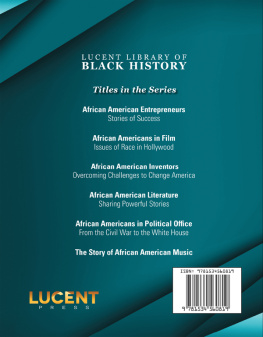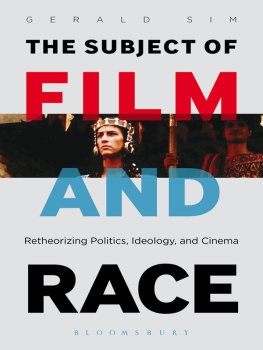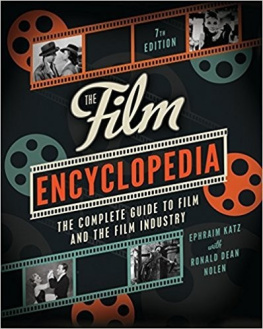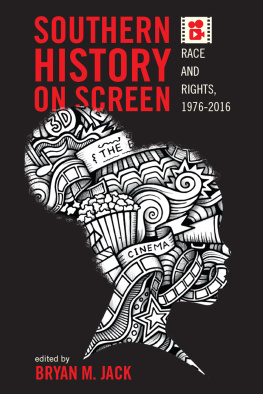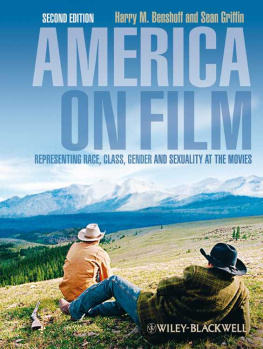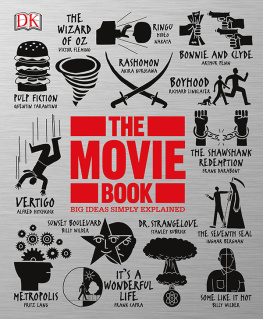Race in American Film
Race in
American Film
Voices and Visions That
Shaped a Nation
Volume 1: AF
DANIEL BERNARDI AND MICHAEL GREEN,
EDITORS

Copyright 2017 by ABC-CLIO, LLC
All rights reserved. No part of this publication may be reproduced, stored in a retrieval system, or transmitted, in any form or by any means, electronic, mechanical, photocopying, recording, or otherwise, except for the inclusion of brief quotations in a review, without prior permission in writing from the publisher.
Library of Congress Cataloging-in-Publication Data
Names: Bernardi, Daniel, 1964- editor. | Green, Michael.
Title: Race in American film : voices and visions that shaped a nation / Daniel Bernardi and Michael Green, Editors.
Description: Santa Barbara : Greenwood, 2017. | Includes bibliographical references and index.
Identifiers: LCCN 2016053032 (print) | LCCN 2017008406 (ebook) | ISBN 9780313398391 (set : alk. paper) | ISBN 9781440845857 (volume 1 : alk. paper) | ISBN 9781440845864 (volume 2 : alk. paper) | ISBN 9781440845871 (volume 3 : alk. paper) | ISBN 9780313398407 (ebook)
Subjects: LCSH: African Americans in motion pictures. | Racism in motion pictures. | Race in motion pictures. | Motion picturesUnited StatesHistory20th century. | Actors and actressesUnited StatesBiography. | Motion picture producers and directorsUnited StatesBiography.
Classification: LCC PN1995.9.N4 R33 2017 (print) | LCC PN1995.9.N4 (ebook) | DDC 791.43/652996073dc23
LC record available at https://lccn.loc.gov/2016053032
ISBN: 978-0-313-39839-1 (Set)
ISBN: 978-1-4408-4585-7 (Volume 1)
ISBN: 978-1-4408-4586-4 (Volume 2)
ISBN: 978-1-4408-4587-1 (Volume 3)
EISBN: 978-0-313-39840-7
21 20 19 18 17 1 2 3 4 5
This book is also available as an eBook.
Greenwood
An Imprint of ABC-CLIO, LLC
ABC-CLIO, LLC
130 Cremona Drive, P.O. Box 1911
Santa Barbara, California 93116-1911
www.abc-clio.com
This book is printed on acid-free paper 
Manufactured in the United States of America
Contents
Alphabetical List of Entries
List of Films by Era
Chronology: Early Films (to 1928)
Films
People
Dates indicate their years of professional activity.
Open-ended date spans indicate that they are still active into the present time.
Topics of the Period
Open-ended date spans indicate that they are still active into the present time.
Chronology: Classic and Midcentury Era (19291969)
Films
People
Dates indicate their years of professional activity.
Open-ended date spans indicate that they are still active into the present time.
Topics of the Period
Open-ended date spans indicate that they are still active into the present time.
Chronology: Contemporary Era (1970present)
Films
People
Dates indicate their years of professional activity.
Open-ended date spans indicate that they are still active into the present time.
Topics of the Period
Open-ended date spans indicate that they are still active into the present time.
Guide to Related Topics
ACTUALITY
AFRICAN AMERICAN
ANIMATION
ARAB/ARAB AMERICAN
ASIAN/ASIAN AMERICAN
BIOPIC
CRIME
DIRECTORS
D. W. GRIFFITH
FILM NOIR
IMMIGRATION
INDEPENDENT
INTERRACIAL BUDDY
ITALIAN AMERICAN
JEWISH
JOHN FORD
LATINO/LATINA
MUSICAL
NATIVE AMERICAN
OSCAR MICHEAUX
SCIENCE FICTION
SIDNEY POITIER
SLAVERY NARRATIVE
SOCIAL PROBLEMS
SPIKE LEE
SPORTS
WAR
WESTERN
WHITE SAVIOR
Preface
Race and racism have always been among the most popular and important of subjects in both Hollywood and independent American film. The earliest films, from the mid-1890s, were preoccupied with representing white Americas obsession with Native Americans, African Americans, Asians, Latinos, Arabs, and Jews (not yet considered white). In this era of overt racism, the subjects were almost always treated with the worst stereotypes: Native Americans were whooping savages or noble friends to the white man. African Americans were lazy, possessed inferior intelligence, and were a constant threat to the purity of white women. Latinos were bandits and greasers. Asians manifested mystical stereotypes of Orientalism and the hysteria of Yellow Peril. Arabs were hook-nosed barbarians with scimitars; Jews were scheming and money-obsessed. Contrasting these representations, early films also perpetuated an ideology of whiteness, which upheld white Anglo-Saxons as true Americans, characterized by their virtue, strength, superior intelligence, and civilized ideals.
Later, in the 1910s, as film exploded in popularity with the general public, D. W. Griffith and other filmmakers perpetuated these stereotypes in thousands of shorts and feature films. As these early filmmakers codified the language of film still used todaytechniques of editing, cinematography, and mise-en-scnethey simultaneously codified the racial representation that is also still used todayoften unconsciously, but still ubiquitously. The outcries and protests from racial and ethnic groups year in and year out attest to this.
Despite this, even the earliest films featured subversion and resistance to cinematic racism. Early shorts and features by white directors and even some films by Griffith (such as Broken Blossoms, 1919) attempted to vilify racism and humanize nonwhites. Meanwhile, filmmakers such as Oscar Micheaux created an alternative cinema, depicting the lives and concerns of African Americans and others, while attempting to minimize racist stereotypes.
American filmmaking consolidated in Hollywood studios from the late 1920s to the late 1960s and produced movies almost entirely from the white male point of view. However, attempts were still made, often within what would later be termed social problem films such as Pinky (1949), Gentlemens Agreement (1947), and Guess Whos Coming to Dinner (1967), to dramatize the evils of racism, although usually through the point of view of a white protagonist. Movies such as Crash (2004), The Butler (2013), and The Help (2011) show that the racial social problem film is still a Hollywood staple in the twenty-first century.
These volumes aim to cover the most famous and important films from all three categories: those that are considered outright racist; those that attempt to subvert racism (however problematically); and those by nonwhite directors that feature nonwhite characters or racial themes. Although the entries in these volumes were compiled by the editors and contributors, we have chosen them based on canonical film and critical race theory scholarship by such authors as Donald Bogle, Richard Dyer, Stuart Hall, bell hooks, Michael Rogin, Jane Gaines, Gina Marchetti, and many others. Although the material is alphabetized, it covers three major erasearly film, which spans the period 18941926; classical and midcentury film, which can be dated from 1927 to 1970; and contemporary film, which spans from 1970 to the present. (The contemporary era is by far the longest era, but scholars have yet to come up with a term that separates the era into distinct periods.)
The Introduction will define how these volumes consider race, but its important to note from the outset that for the purposes here, we define it differently from ethnicity. That is, save for a few exceptions, these volumes will not cover the representation of such groups as Italians, Irish, Polish, Russians, Germans, and Greeks. The primary reason for this is space. For example, an entire volume could be devoted to the representation of Italian Americans alone.
Next page
